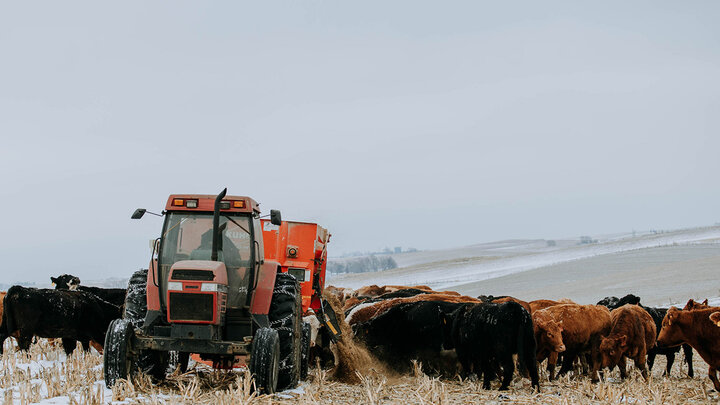At a Glance
- Cash rent: stable income for landowners, all risk on tenants.
- Crop share: shared costs, income, and management decisions.
- Taxes differ — cash rent is passive; crop share is farm income.
- Cash rent offers predictability; crop share adds flexibility.
- Best lease depends on goals, risk tolerance, and tax planning.
Leasing farmland is a foundational part of Nebraska’s agricultural economy. It provides landowners a way to generate income without actively farming and offers producers access to acreage without the high capital investment of land ownership. Two common lease arrangements — cash rent and crop share — are widely used across the state. While each has its place, they come with different risk levels, profitability potential, and tax implications that both landowners and tenants must carefully evaluate.
As agricultural economists, we are frequently asked, “Which is better: cash rent or crop share?” The answer is: it depends. The best lease structure is the one that fits the goals, risk aversion, and other preferences of both parties, and one they can mutually agree upon. Strong communication between landowners and tenants is essential for a successful relationship, regardless of the lease type.
Cash Rent: Simplicity and Stability
Cash rent leases involve a fixed payment from the tenant to the landowner, typically on a per-acre basis, regardless of changes in yield or market prices throughout the growing season. This model is appreciated for its simplicity and predictability.
For landowners, cash rent offers:
- A stable, predictable income stream, that is commonly split into multiple payments that are collected in a single calendar year.
- Minimal involvement in day-to-day farming decisions.
- Income is reported as passive income on Schedule E.
- No financial responsibility for operating inputs.
However, cash rents should be regularly renegotiated to reflect changes in land values, commodity markets, production costs, and increases in a landowner's expenses such as property taxes or irrigation equipment. Both parties must be open to adjusting rents up or down based on market conditions to maintain fairness.
For tenants, cash rent arrangements mean taking on all the production and market risk and potential reward. Cash rent traditionally requires the tenant to pay half of the rent at the beginning of lease, and the remaining at harvest. This cash outlay is something that must be planned for. However, tenants keep the entire profit when yields and prices are high, but also bear all the losses in poor years.
Crop Share: Shared Risk, Shared Reward
A crop share lease divides both the crop and, in many cases, a portion of the input costs (such as seed, fertilizer, and chemicals) between the landowner and tenant. This arrangement fosters shared interest in the crop’s success and often involves the landowner in some level of management decision-making.
For landowners, crop share leasing may:
- Provide higher returns in years with strong yields and commodity prices.
- Require participation in input decisions.
- Allow participation in federal farm programs (e.g., ARC/PLC, ECAP) and crop insurance, in proportion to their share.
- Require marketing their share of the crop.
However, landowners also bear the downside risk, as their income is affected by adverse conditions such as poor production years or low market prices. Furthermore, landlords must manage expenses year-round as well as variable income. Consider decisions such as pre-paying expenses, in-season applications, and paying for storage.
For tenants, crop share reduces financial exposure, as both income and costs are shared. However, the tenant must also coordinate closely with the landowner, requiring a strong communication foundation.
Tax Implications
One of the most overlooked aspects of lease decisions is the tax treatment, which can vary significantly between lease types.
Cash Rent:
- Cash rent provides a steady income, typically paid within the calendar year, which is usually easier for landowners to manage from a tax perspective.
- Generally considered passive income like other rental properties, reported on Schedule E.
- Often ineligible for agricultural tax deductions or federal farm program benefits.
Crop Share:
- Crop share income and expenses can vary widely from year to year. Furthermore, the timing of income and expenses may also change. This variability can make it more difficult to manage crop-share rental income from a tax perspective.
- Crop share gives more flexibility to the landlord for the timing of recognizing the income by selling grain before or after the end of a tax year.
- Typically, reported on Form 4835 as farm income that is based on production of a tenant.
- Could also qualify for farm-specific tax deductions, income averaging, and the Qualified Business Income (QBI) deduction under Section 199A, which provides more ways to manage tax liability.
- Overall, crop share offers greater flexibility in managing landowners' tax liabilities.
If a landowner is considering switching between lease types, particularly from crop share to cash rent, it is critical to consult a qualified tax advisor or CPA who specializes in agricultural taxation. Making such a change without proper planning can inadvertently trigger tax consequences or affect eligibility for retirement and estate tax provisions.
Final Thoughts
Choosing between cash rent and crop share leases depends on various factors: risk appetite, desired income stability, level of involvement and, in some cases, income tax considerations. Both arrangements can be fair and profitable when structured thoughtfully.
Above all, clear communication, a written lease agreement, and regular reviews of market conditions are key to a successful leasing relationship between tenants and landowners.




